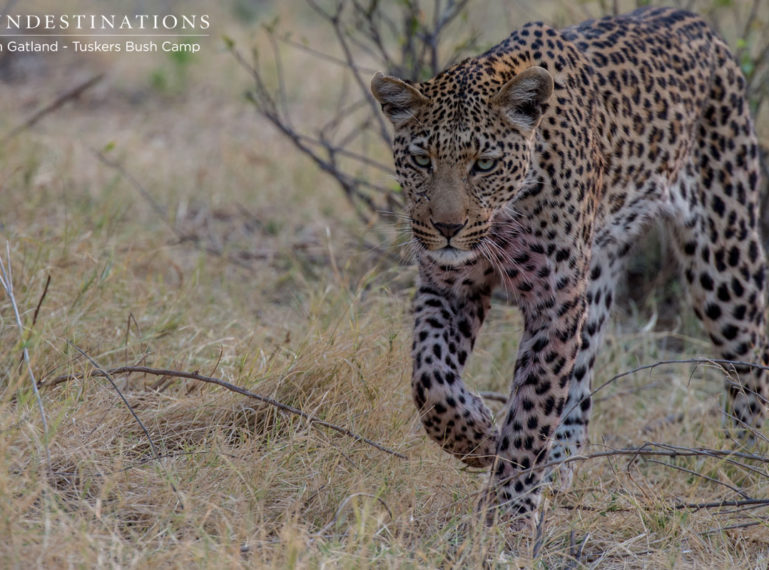
Leopards are elusive opportunistic predators which hunt in the dead of night and hide during daylight hours. They have excellent night vision and take down their prey by stalking and ambushing. During the day they sleep to conserve energy, much of which is used during hunting and patrolling territories.
While out on game drive in the Moremi Game Reserve with Tuskers, two leopards were seen with their kill. Both leopards were seen during the cooler hours of the day, which is generally when cats begin their patrol and scent marking. Although primarily nocturnal hunters, if the opportunity presents itself, a leopard will not hesitate to pounce, even if its already made a kill!
During the heat of the day, leopards like to seek cover deep within the thickets or in drainage lines, where they remain camouflaged and well-hidden. They’ve been known to make use of rocky outcrops and tree branches in order to bask in the sun. These elevated areas provide the perfect vantage point form which to survey their landscape.
This leopard in the Moremi was clearly on the move and returning to its recently made kill, which was obviously stashed somewhere for safekeeping. After leopards have conducted a kill, they will hoist their meal up into the fork of a tree to prevent thieving hyenas and other scavengers from stealing it.
If an area has a minimal amount of scavenger activity, a leopard will devour its prey on the ground. When the prey is kept high within a tree, it means the leopard does not have to gorge on its meal and can wander off to quench its thirst and return at a later stage to resume eating.
Clearly this majestic cat was in the middle of its meal and decided to take a break from its feast! The blood soaked fur and matted red dreadlocks are a dead giveaway that a small mammal met its untimely fate at the hands of this master stalker and super predator!
This leopard was clearly using the tree as a vantage point to survey the surrounding landscape. The adaptable and flexible cat lives a secretive lifestyle and guests were incredibly lucky to see this animal literally hanging about in a tree!
The collared leopard conducted a huge and impressive kill. It managed to drag and hoist this huge warthog into a nearby tree. Clearly exhausted from expending energy on such a massive kill, it turned to face the other way to catch his breath before delving into the meaty flesh.
Leopards are capable of lifting a kill as heavy as their own bodies into a tree. They have dewclaws which enable them to clamber up trees and hoist heavy loads. A leopard’s body is well-adapted to carrying prey – they also have relatively high chests which allows for a sizeable meal to be carried while on the move.
Leopards are one of Africa’s most aloof big cats and sightings are considered a rare privilege. They conduct a notoriously lone ranger lifestyle, where both males and females defend their territory and hunt alone.
Leopards are non-confrontational creatures and will avoid each other rather than confront. If you do see two leopards together, its generally a mother and its cub or during mating season.
The Moremi Game Reserve is an incredible destination for leopard sightings – the team at Tuskers will vouch for that!
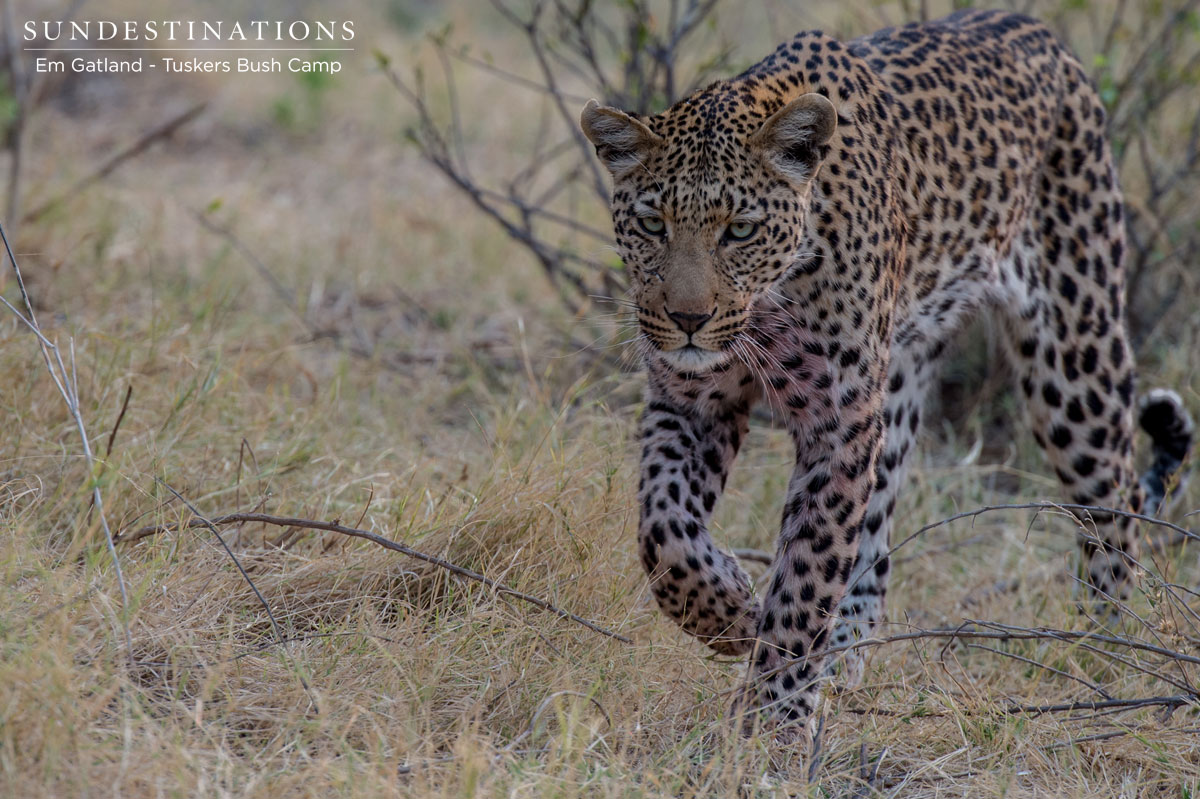
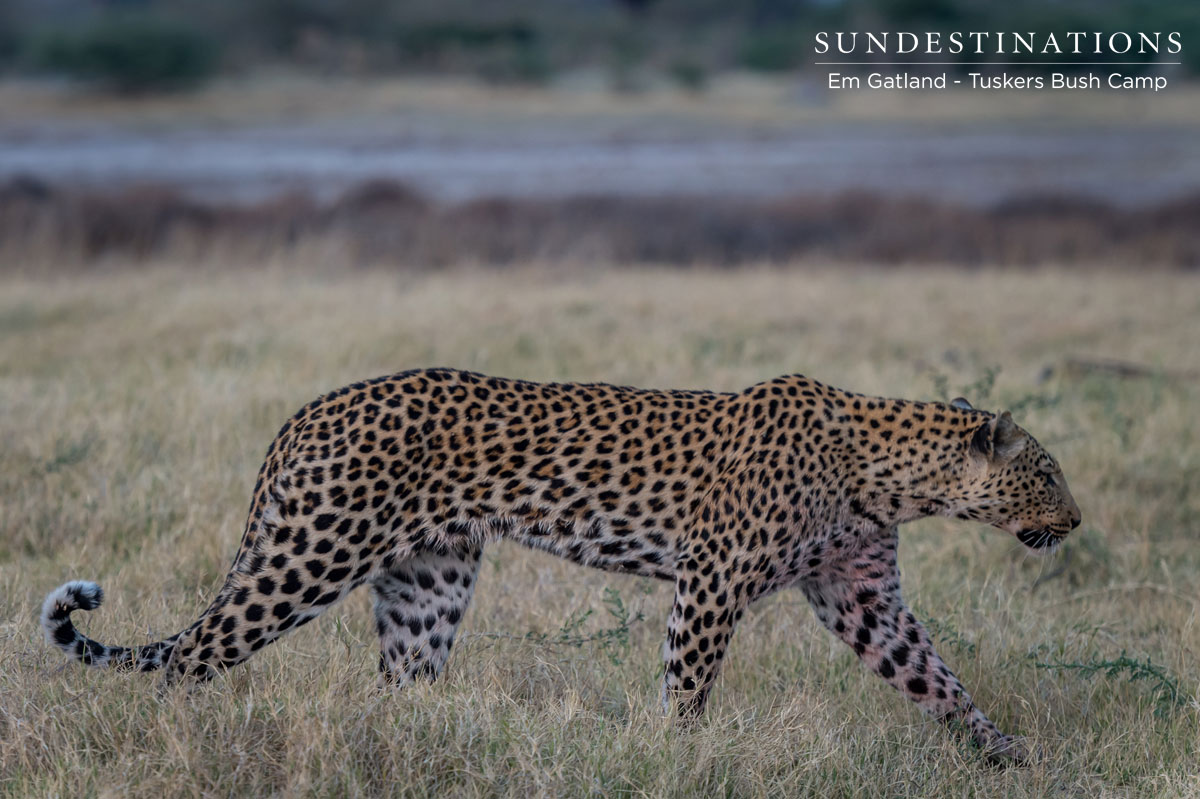
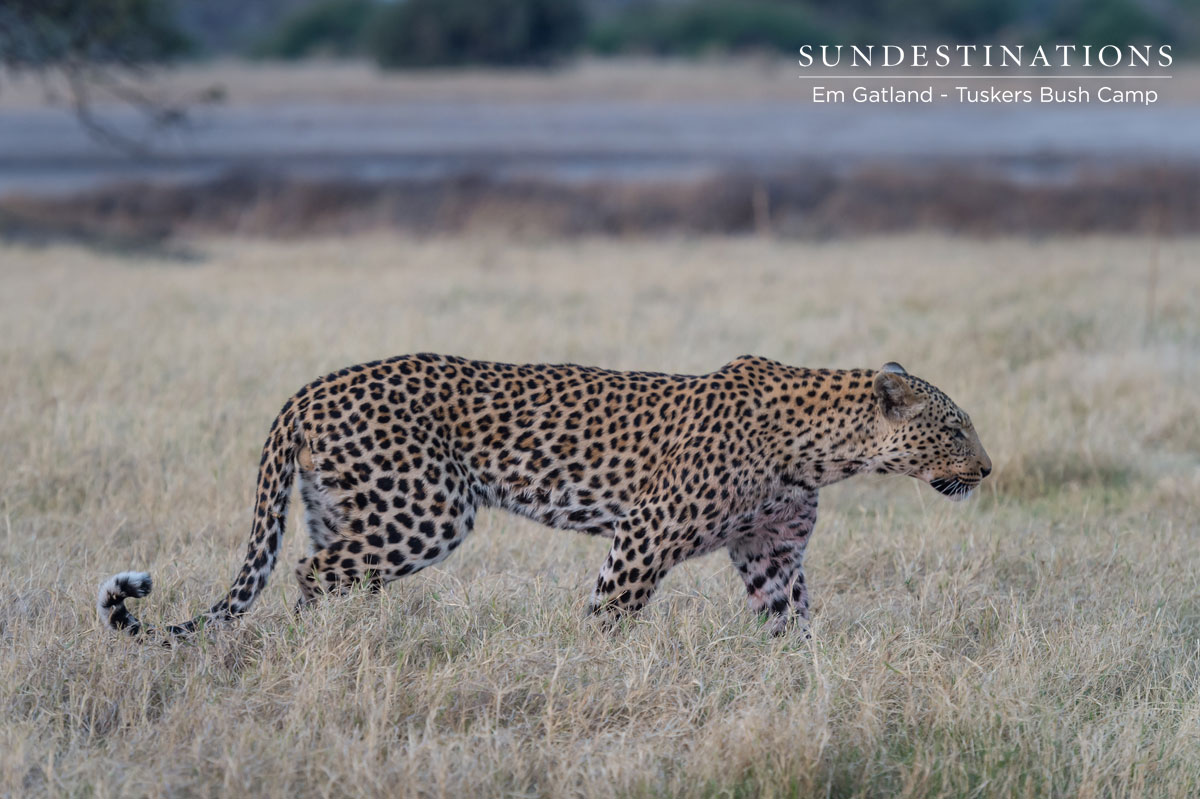
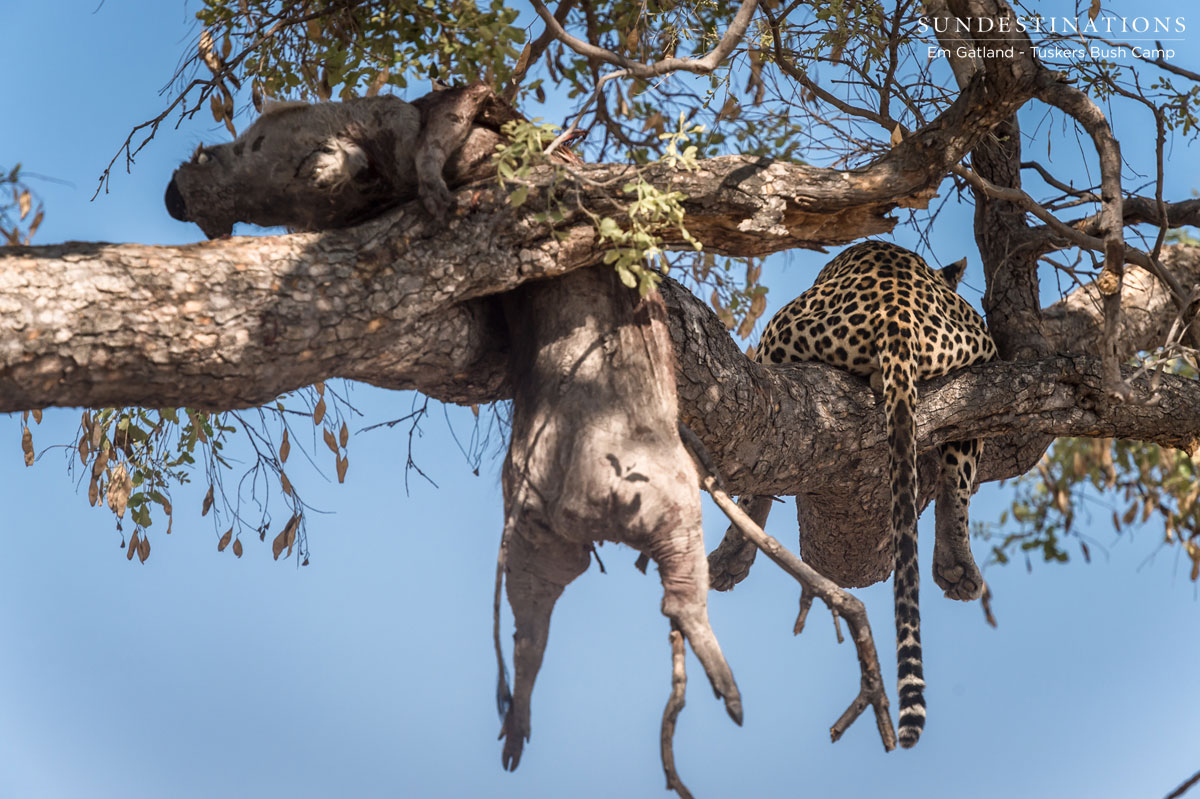
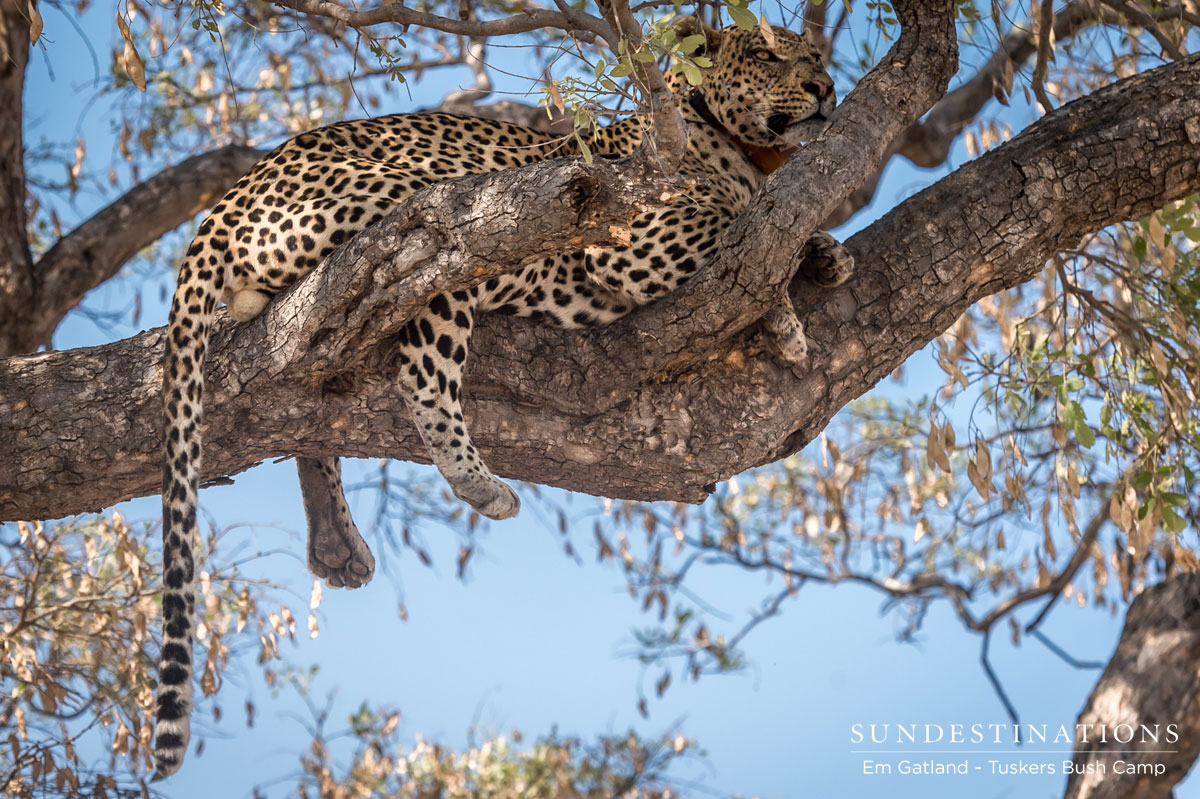
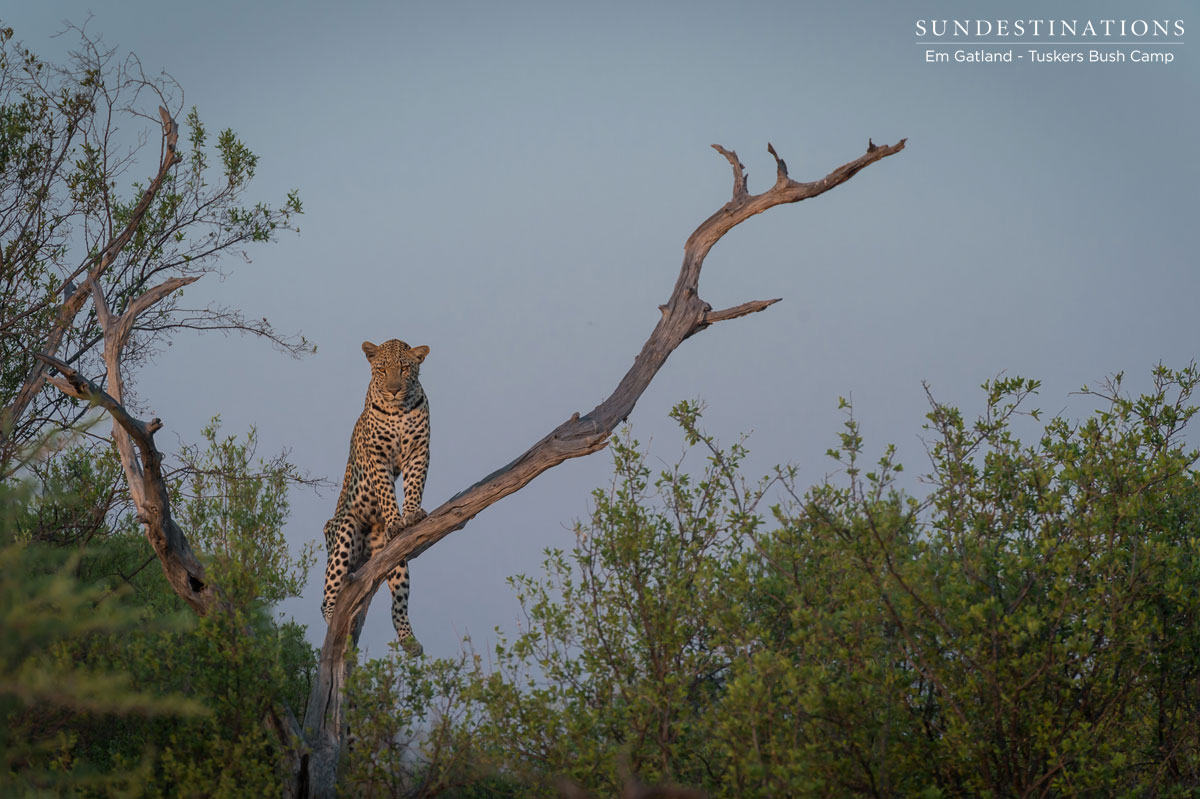
Leave a Comment